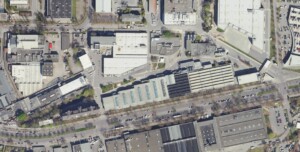 The last plant of BMW I visited in Germany was in Spandau, Berlin. This was different from BMW Munich and Leipzig. For one, it makes motorbikes, not cars. But its performance was also not as stellar as the best of (German) benchmark plants Leipzig and Munich. But despite some issues, it still performed on an equal level with German car plants. Let’s dig deeper.
The last plant of BMW I visited in Germany was in Spandau, Berlin. This was different from BMW Munich and Leipzig. For one, it makes motorbikes, not cars. But its performance was also not as stellar as the best of (German) benchmark plants Leipzig and Munich. But despite some issues, it still performed on an equal level with German car plants. Let’s dig deeper.
Disclaimer: The following are based on my personal observations and opinions and may not be accurate or correct. It is based on publicly available information and what I observed during public tours, and when I observed it. The observations may differ at a different time and place.
BMW Berlin (Motorbikes)
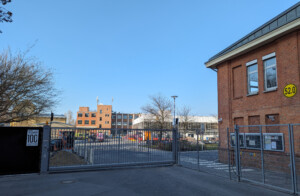
The third BMW plant we visited was the motorbike (and automotive brake pads) plant in Berlin. This was very different from the two BMW automotive plants. For one, the other visitors in the group were all obvious bikers, and—while I am not a spring chicken anymore—I definitely lowered the average age of the group. Within the plant, everybody including the plant manager is on a first name basis. Also, I have done similar studies in hundreds of plants before and never had a problem. Naturally, I always tell the guide that I am not from the competition, but merely a professor taking notes on my pad, as I did in Berlin. After all, I don’t want them to worry when someone writes everything down. The guide in Berlin was also fine with this. However, when the workers saw me taking notes I got some intense hostile stares on a level that I have not experienced before. I guess not only the customers of this plant are of the freewheeling, independent type…
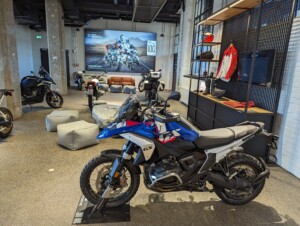 Anyway, the plant started production in 1969, after BMW bought an older plant. Like Munich, the city grew around the plant, and it is now in the middle of the Spandau borough of Berlin. They are also restricted in space and produce on multiple floors, although they were able to build a new logistic center after buying an adjacent factory. A neat thing I saw was two robots that took unsorted plastic boxes in different sizes out of a mesh cage and sorted and stacked them by size on a pallet. Such picking out of an unsorted box is still not too easy in robotics.
Anyway, the plant started production in 1969, after BMW bought an older plant. Like Munich, the city grew around the plant, and it is now in the middle of the Spandau borough of Berlin. They are also restricted in space and produce on multiple floors, although they were able to build a new logistic center after buying an adjacent factory. A neat thing I saw was two robots that took unsorted plastic boxes in different sizes out of a mesh cage and sorted and stacked them by size on a pallet. Such picking out of an unsorted box is still not too easy in robotics.
Overall, the 2200 employees build 900 bikes (and scooters) per day of 28 different models in two shifts. They also produce brake pads for cars. I saw the same type of AGVs as in Leipzig and Munich. We visited machining, logistics, engine assembly, and one of the four final assembly lines.
The Potential: Cleanliness, Organization, Maintenance
What was for me a consistent picture throughout the plant was the lack of organization and cleanliness. In the machining area, many exits and roads were completely blocked by material. An oil spill was wiped off, but still slippery. Some white powder was in a pile on the floor. In Logistics, one AGV seemed to be broken down in the middle of the road, two others were just idling on the middle of the road (or blocking each other? Not sure). In Assembly, boxes and other stuff were also placed everywhere. It was a common picture to see a nicely designed supermarket shelf… with some additional boxes on the floor in front of it. Since the plant is large, they also had bicycles for their employees, but when I looked closer I noticed that more than half of the bicycles had a flat tire, which to me indicates the possibility of more maintenance issues. I also saw comparatively less documentation, andons, and paper than in automotive plants.
Insofar it is surprising that the estimate of the percentage of the time the worker adds value is actually quite good. The engine assembly had 35% value add, but the final assembly had 42%. While this is far from the best of (German) class BMW Munich and Leipzig plants, especially the final assembly performs much better than the bulk of the German car plants at Audi, Volkswagen, and Daimler. And this despite having a higher number of models. In fact, it was close to the Honda motor factory in Kumamoto, Japan with 45% and 51% value adding time for the engine assembly and final assembly.
Engine Assembly
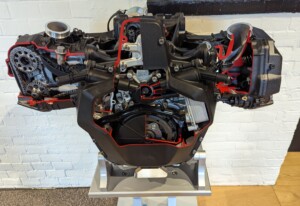 They had four engine assembly lines. These had 22 robot cells to help with assembly, albeit when we visited most of them were stopped due to some problems, and so far made 0 of a target of 151 engines. The engine assembly we visited worked at a takt of 65 seconds per bike, with a lead time or 90–250.
They had four engine assembly lines. These had 22 robot cells to help with assembly, albeit when we visited most of them were stopped due to some problems, and so far made 0 of a target of 151 engines. The engine assembly we visited worked at a takt of 65 seconds per bike, with a lead time or 90–250.
Final Assembly
The G3 final assembly line I looked at produced 17 different motorbike models. The line with 44 stations was also the most modern line in the plant. While other lines had the bike hanging from a C-shaped hook, the G3 line used AGV on an induction loop to move the bikes from station to station (the same AGV models as in Leipzig and Munich). They produced at a takt of 1:58 min with a lead time of 88 minutes for the final assembly for a total around 220–360 minutes. The cleanliness in the final assembly was much better than in the machining shop, but still had a lot of unstructured material placements. I also though that the number of andon monitors and displays was much better.
Similar to automotive they have a build manifest to indicate which options go into what bike. However, while automotive uses a lot of structure and boxes to help the workers to quickly see what they need, the build manifest in Berlin was merely a bullet list, and I am not sure if it was sorted. Hence, I fear the risk of overlooking an option, and hope that they check at the end.
The workers operate in teams of twenty people. Similar to automotive they do job rotation to keep the work interesting. Interestingly, while in automotive they often rotate every few hours or less, in Berlin they rotate on a weekly basis. Overall, it is a plant that is not bad but I think could do much more with a better organization and more attention to details.
One other thing that upset me was not the fault of the plant, however. We were told that we could keep our mobile phones but were not allowed to take pictures. Yet, one person in the other group started taking pictures in the plant, causing lots of trouble for the guide. I don’t get it. I am very grateful for all plants that open their doors and allow visitors. As a visitor I will honor this by following their rules. All photos of mine you see here (or in other articles) were made only in areas where photos are permitted or with explicit permission from the guide. In my next post I will look at the plants of Mercedes-Benz as well as Daimler Trucks (which are technically separate companies since 2021). Now, go out, visit other plants when you can, but respect their hospitality, and organize your industry!
If You Want to follow in My Footsteps
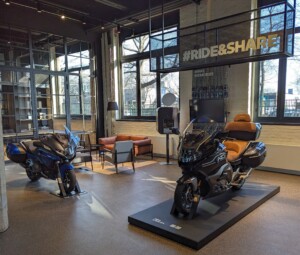 BMW offers tours to the general public in Munich, Leipzig, and their motorbike plant in Berlin. If you are into motor bikes, tours are offered in their motor bike plant in Berlin here, with the option of a basic (90 min), extended (120 min) or school tour.
BMW offers tours to the general public in Munich, Leipzig, and their motorbike plant in Berlin. If you are into motor bikes, tours are offered in their motor bike plant in Berlin here, with the option of a basic (90 min), extended (120 min) or school tour.
PS: Many thanks to BMW for offering tours through their plants to the public!
